This gallery contains 2 photos.
Monthly Archives: March 2020
TRANSBOUNDARY WATERS TUSSLE AND TIPAIMUKH DAM
J Yumnam
https://mygoldenbengal.wordpress.com/2014/12/14/transboundary-waters-tussle-and-tipaimukh-dam/ 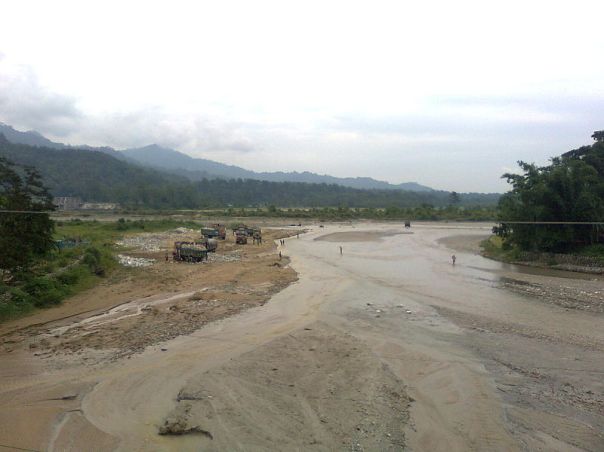 The world is rife with conflicts over waters, especially over use and management of transboundary waters. Rivers with transboundary nature, Brahmaputra, Mekong, Barak etc are becoming subjects of controversy over the right to manage the waters. Some countries exercise power through military or economic means to weaker countries to justify control of transboundary waters. Conflicts emerge when countries upstream of a water resource use the water available to them to wield more power and when certain countries downstream use other forms of power such as military to get more water. Stronger countries use “exploitation potential”, both technical capacity and infrastructure to exploit water resources.
The world is rife with conflicts over waters, especially over use and management of transboundary waters. Rivers with transboundary nature, Brahmaputra, Mekong, Barak etc are becoming subjects of controversy over the right to manage the waters. Some countries exercise power through military or economic means to weaker countries to justify control of transboundary waters. Conflicts emerge when countries upstream of a water resource use the water available to them to wield more power and when certain countries downstream use other forms of power such as military to get more water. Stronger countries use “exploitation potential”, both technical capacity and infrastructure to exploit water resources.
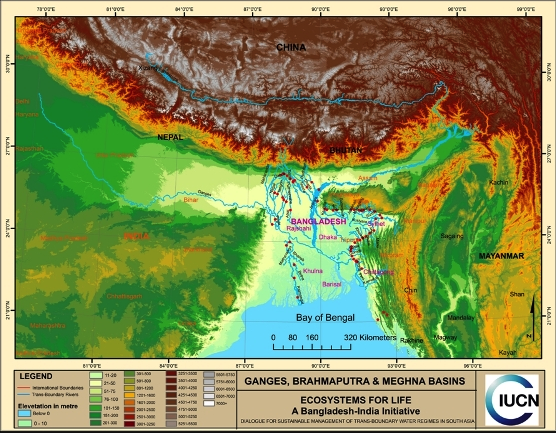 Two expressions of concerns, one Bangladesh’s opposition to Tipaimukh Multipurpose Hydroelectric Project over Barak River in Manipur in India’s North East and the other, India’s objections to Chinese Government’s plan to dam and divert waters of Yarlung Tsangpo (Brahmaputra) River in Tibetan Plateau, elucidates potentials of conflicts over the use of transboundary waters and the need to explore feasible means to avoid conflicts. The critiques of Tipaimukh dam to be built in Manipur is moving beyond imposed frontiers, the traditional expression of concerns once confined limitedly in Manipur and parts of Bangladesh now resonates from afar. Never had Tipaimukh Dam been focus of international diplomacy, media attention, intelligentsia critics, environmentalist and those with high tentacles as in 2009. The Prime Ministers of India and Bangladesh discussed the contentious issue at the recently concluded Non Aligned Movement (NAM) summit, July 2009 in Egypt.[1] The issue has now moved from the confines of Manipur Assembly discussion to the British and Bangladesh parliamentary debates to the deliberations of several United Nations human rights forums.[2]
Two expressions of concerns, one Bangladesh’s opposition to Tipaimukh Multipurpose Hydroelectric Project over Barak River in Manipur in India’s North East and the other, India’s objections to Chinese Government’s plan to dam and divert waters of Yarlung Tsangpo (Brahmaputra) River in Tibetan Plateau, elucidates potentials of conflicts over the use of transboundary waters and the need to explore feasible means to avoid conflicts. The critiques of Tipaimukh dam to be built in Manipur is moving beyond imposed frontiers, the traditional expression of concerns once confined limitedly in Manipur and parts of Bangladesh now resonates from afar. Never had Tipaimukh Dam been focus of international diplomacy, media attention, intelligentsia critics, environmentalist and those with high tentacles as in 2009. The Prime Ministers of India and Bangladesh discussed the contentious issue at the recently concluded Non Aligned Movement (NAM) summit, July 2009 in Egypt.[1] The issue has now moved from the confines of Manipur Assembly discussion to the British and Bangladesh parliamentary debates to the deliberations of several United Nations human rights forums.[2]
The Tipaimukh Multipurpose Hydroelectric Project is to be constructed 500 Meters downstream from the confluence of Barak and Tuivai Rivers in Manipur over Barak River with firm generation capacity of 401.25 MW. The main objective of the project is to generate 1500 MW hydropower and flood control on 2039 Sq. km. The North Eastern Electric Power Corporation (NEEPCO) was earlier slated to undertake the project with the Manipur Govt at 5% equity till it was replaced recently by National Hydroelectric Power Corporation (NHPC).
The Government (Govt) of India had a tough time pursuing the Tipaimukh project in Manipur since 1970’s due to vigorous peoples’ opposition to the project and also in clearing out the armed insurgents who dominates the Tipaimukh dam site area. Manipur is afflicted with armed conflict as national liberation movement groups battle Indian armed forces operating under the Armed Forces (Special Powers) Act, 1958 for full secession of Manipur since 1949, the year Manipur was merged to India without peoples consent.[3] The Tipaimukh project is also opposed by several national liberation groups terming it as India’s yet another sinister effort for hegemony and exploitation of the natural resources of Manipur[4].
Proposed Tipaimukh Dam: Concerns and Responses
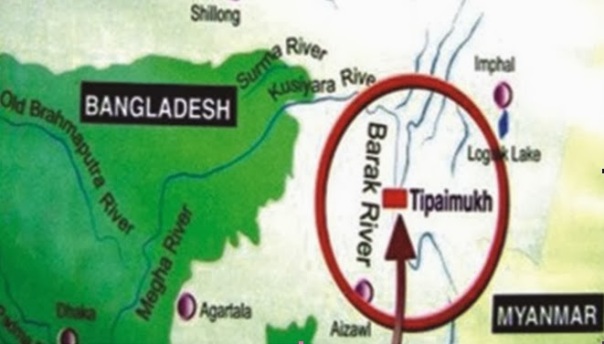 The Tipaimukh dam issue currently continues to dominate the domain of political, media, intellectual and civil society’s discourse in Bangladesh with a unilateral demand for revocation of India’s decision for the project. Massive rallies, protest meetings, strikes and other forms of protest against the dam continues to gain momentum in Bangladesh. The Tipaimukh Dam concern is not a recent phenomenon as the first international Conference on Tipaimukh Dam, held way back in December 2005 had resolved against the project. The peoples’ concerns in Bangladesh are based on their bitter experience of severe water shortage and multifaceted impacts after commissioning of Farakka Barrage over the Ganges River by India. Concerns raised include staggering environmental degradation, economic crisis and hydrological drought. The damming of Barak River, seriously limiting free flowing Surma and Kushyara rivers will disrupt agriculture, irrigation, drinking water supply, navigation etc and reduce recharge of ground water during lean season, affecting all dug wells and shallow tube wells. Bangladesh gets 7 to 8 percent of its total water from the Barak River.
The Tipaimukh dam issue currently continues to dominate the domain of political, media, intellectual and civil society’s discourse in Bangladesh with a unilateral demand for revocation of India’s decision for the project. Massive rallies, protest meetings, strikes and other forms of protest against the dam continues to gain momentum in Bangladesh. The Tipaimukh Dam concern is not a recent phenomenon as the first international Conference on Tipaimukh Dam, held way back in December 2005 had resolved against the project. The peoples’ concerns in Bangladesh are based on their bitter experience of severe water shortage and multifaceted impacts after commissioning of Farakka Barrage over the Ganges River by India. Concerns raised include staggering environmental degradation, economic crisis and hydrological drought. The damming of Barak River, seriously limiting free flowing Surma and Kushyara rivers will disrupt agriculture, irrigation, drinking water supply, navigation etc and reduce recharge of ground water during lean season, affecting all dug wells and shallow tube wells. Bangladesh gets 7 to 8 percent of its total water from the Barak River.
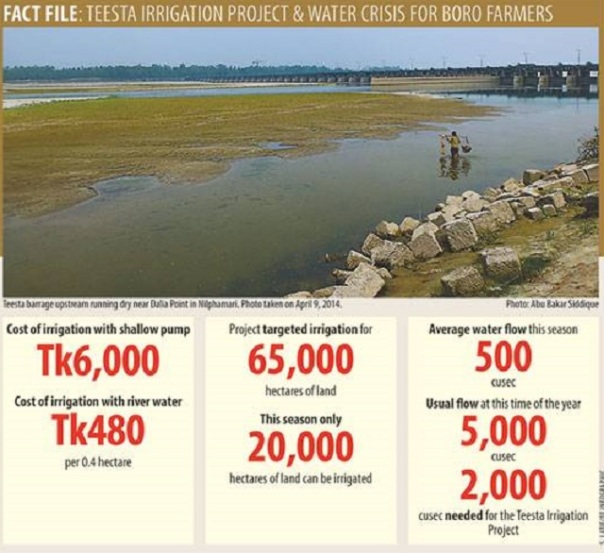 The Surma-Kushyara with its maze of numerous tributaries and distributaries support agriculture, irrigation navigation, drinking water supply, fisheries, wildlife in the entire Sylhet division and in peripheral areas of Dhaka division and industries like fertilizer, electricity, gas[5]. The dam would also leave millions jobless with the drying up of the two rivers. Millions of people are dependent on hundreds of water bodies, fed by the Barak, in the Sylhet region for fishing, agriculture and allied activities. The Barak-Surma-Kushyara is an international river with Bangladesh as a lower riparian country having rights over any decision over River. “Construction of a dam at Tipaimukh would be a death-trap for Bangladesh, it rather involves the very existence of the lives of the 15 Crore people of the country,” Bangladesh National Party (BNP) vice president Hafizuddin Ahmed asserted.[6]
The Surma-Kushyara with its maze of numerous tributaries and distributaries support agriculture, irrigation navigation, drinking water supply, fisheries, wildlife in the entire Sylhet division and in peripheral areas of Dhaka division and industries like fertilizer, electricity, gas[5]. The dam would also leave millions jobless with the drying up of the two rivers. Millions of people are dependent on hundreds of water bodies, fed by the Barak, in the Sylhet region for fishing, agriculture and allied activities. The Barak-Surma-Kushyara is an international river with Bangladesh as a lower riparian country having rights over any decision over River. “Construction of a dam at Tipaimukh would be a death-trap for Bangladesh, it rather involves the very existence of the lives of the 15 Crore people of the country,” Bangladesh National Party (BNP) vice president Hafizuddin Ahmed asserted.[6]
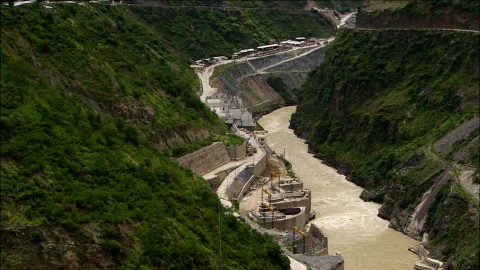 In Manipur, where the dam is to be built, the concerns are diverse and premised on three aspect, first the direct physical aspect of displacement, loss of biodiversity, loss of economic activities of indigenous peoples, social and environmental impacts etc, the second being the procedural lapses, absence of holistic impact assessment and limitations of developmental and environmental regulations, weak enforcement mechanisms and lack of people oriented accountability norms and thirdly, unclear benefits of the project to the people of Manipur and nuances based on traumatic experiences from similar projects in Manipur such as NHPC’s 105 MW Loktak Multipurpose Hydroelectric Project (NHPC) which remains irresponsible and unaccountable for its devastation of Loktak wetlands ecosystem, submergence of vast tract of agricultural land, loss of species and failure to rehabilitate several thousands of affected peoples of Manipur even after nearly three decades of project commissioning in 1984. The NHPC further insisted on reaping more profits by filing Loktak project as Clean Development Mechanisms project for carbon credits under Kyoto Protocols of the United Nations Framework Conventions on Climate Change.
In Manipur, where the dam is to be built, the concerns are diverse and premised on three aspect, first the direct physical aspect of displacement, loss of biodiversity, loss of economic activities of indigenous peoples, social and environmental impacts etc, the second being the procedural lapses, absence of holistic impact assessment and limitations of developmental and environmental regulations, weak enforcement mechanisms and lack of people oriented accountability norms and thirdly, unclear benefits of the project to the people of Manipur and nuances based on traumatic experiences from similar projects in Manipur such as NHPC’s 105 MW Loktak Multipurpose Hydroelectric Project (NHPC) which remains irresponsible and unaccountable for its devastation of Loktak wetlands ecosystem, submergence of vast tract of agricultural land, loss of species and failure to rehabilitate several thousands of affected peoples of Manipur even after nearly three decades of project commissioning in 1984. The NHPC further insisted on reaping more profits by filing Loktak project as Clean Development Mechanisms project for carbon credits under Kyoto Protocols of the United Nations Framework Conventions on Climate Change.
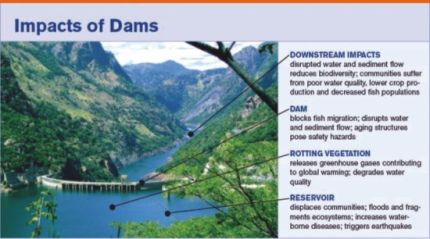 A large number of Zeliangrong and Hmar tribes will be displaced permanently and deprived of livelihood. Official figures states 1,461 Hmar families will be directly displaced due to the project. The dam will submerge 311 sq. km covering 90 villages with 1,310 families, including 27,242 hectares of forest and cultivable land and posing serious threat to the rich biodiversity, flora and fauna of the region. Social impact due to demographic changes due to migration of workers from outside Manipur has not been addressed. The site selected for Tipaimukh project is one of the most active in the entire world, recording at least two major earthquakes of 8+ in the Richter scale during the past 50 years. The dam is envisaged for construction in one of the most geologically unstable area and the dam axis falls on a ‘fault line’ potentially epicenters for major earthquakes.
A large number of Zeliangrong and Hmar tribes will be displaced permanently and deprived of livelihood. Official figures states 1,461 Hmar families will be directly displaced due to the project. The dam will submerge 311 sq. km covering 90 villages with 1,310 families, including 27,242 hectares of forest and cultivable land and posing serious threat to the rich biodiversity, flora and fauna of the region. Social impact due to demographic changes due to migration of workers from outside Manipur has not been addressed. The site selected for Tipaimukh project is one of the most active in the entire world, recording at least two major earthquakes of 8+ in the Richter scale during the past 50 years. The dam is envisaged for construction in one of the most geologically unstable area and the dam axis falls on a ‘fault line’ potentially epicenters for major earthquakes.
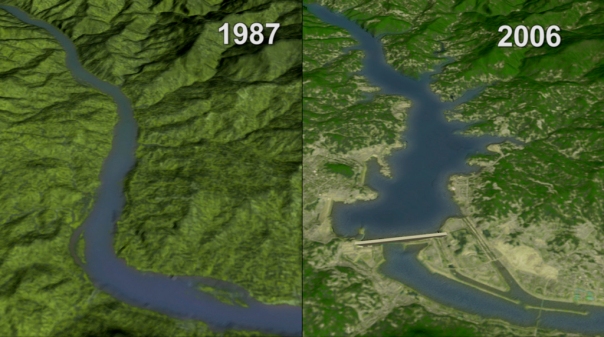 The Memorandum of Understanding between the Govt of Manipur and the NEEPCO was signed on 9 January 2003 even as the affected peoples both in the upstream and downstream of Barak River called for a wide consultation on Tipaimukh Dam based on provision of project information. Against peoples’ wishes, the power Minister of India, Sushil Kumar Shinde laid the foundation stone for Tipaimukh Dam on 15 December 2006. Of late, the Ministry of Environment and Forests (MoEF) of the Govt of India accords environmental clearance on 24 October 2008 despite peoples’ objection to Tipaimukh Dam during the projects’ five public hearings held from the year 2004 to 2008.[7]
The Memorandum of Understanding between the Govt of Manipur and the NEEPCO was signed on 9 January 2003 even as the affected peoples both in the upstream and downstream of Barak River called for a wide consultation on Tipaimukh Dam based on provision of project information. Against peoples’ wishes, the power Minister of India, Sushil Kumar Shinde laid the foundation stone for Tipaimukh Dam on 15 December 2006. Of late, the Ministry of Environment and Forests (MoEF) of the Govt of India accords environmental clearance on 24 October 2008 despite peoples’ objection to Tipaimukh Dam during the projects’ five public hearings held from the year 2004 to 2008.[7]
The environmental clearance of MoEF is despite the fact that the downstream impact assessment of the project in Assam and Bangladesh is still pending. Notwithstanding serious lack of information, Detailed Project Report (DPR) and Environmental Impact assessment and management plans of the dam, the Govt of India floated international tenders inviting bids for construction of the project.[8] Largely the Govt of India rely on militarization of dam site area and suppression of voices for fair decision making process and sustainable development to pursue construction of the dam.
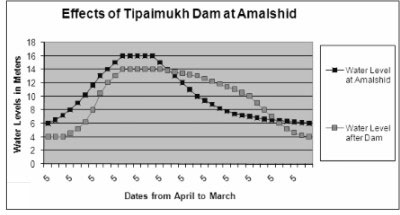 The Indian Govt’s response to Bangladesh concerns has long been marked by a state of denial. Indeed, the Indian High Commissioner Pinak Ranjan Chakrabarty’s statement of absence of an international law that could prevent India from constructing the Tipaimukh Dam and that Bangladesh’s concerns are based on ignorance on 21 June 2009 at Dhaka provoked an intense resentment in Bangladesh even calling for his expulsion. Experts counter reacted his statement as totally erroneous in view of the status of the 1996 Indo-Bangladesh Ganges Water Treaty and the applicability of the 1997 UN Convention on the Law of Non-Navigational Uses of International Watercourses.
The Indian Govt’s response to Bangladesh concerns has long been marked by a state of denial. Indeed, the Indian High Commissioner Pinak Ranjan Chakrabarty’s statement of absence of an international law that could prevent India from constructing the Tipaimukh Dam and that Bangladesh’s concerns are based on ignorance on 21 June 2009 at Dhaka provoked an intense resentment in Bangladesh even calling for his expulsion. Experts counter reacted his statement as totally erroneous in view of the status of the 1996 Indo-Bangladesh Ganges Water Treaty and the applicability of the 1997 UN Convention on the Law of Non-Navigational Uses of International Watercourses.
Bangladesh experts though agreeing that it is not yet binding as an “international treaty” law, opined there is every reason to argue that the Convention, being adopted by a vote of 103 – 3 in the UN General Assembly, is applicable as “evidence of international customary law” to Tipaimukh dam or any such project on shared rivers. The 1997 Convention put heavy emphasis on comprehensive cooperation for equitable utilization of any trans-boundary watercourse, no-harm to all the co-basin states, and adequate protection of the watercourse itself.[9] Sensing a political crisis in South Asia over Tipaimukh Dam, the U.S. Ambassador to Bangladesh, James F Moriarty urge the people and the government of Bangladesh to discuss with India to settle the Tipaimukh dam issue,” while speaking at a discussion on ‘Engaging South Asia: Obama’s South Asia Policy,’ held in Dhaka.[10]
Dams over transboundary waters in South Asia and Challenges:
As Bangladesh engaged India to drop construction of Tipaimukh dam, India too is busy raising concerns with Chinese Govt’s efforts to dam and generate 40,000 Megawatt power from Yarlung Tsangpo (Brahmaputra) in Tibet and to divert 200 billion cubic meters of waters to the Yellow River for easing water shortages in cities of Shaanxi, Beijing and Tianjin in Northern China. The dam and diversion plan is at the Tsangpo River’s big U-turn at 7,782-meter-high Namcha Barwa, the world’s deepest canyon before entering India. Shu Yinbiao, vice president of State Grid Corp. of China opined, “An initial study shows the river can accommodate hydropower stations with a total capacity of 70 gigawatts, or about 10 percent of the nation’s overall generating capacity”.[11]
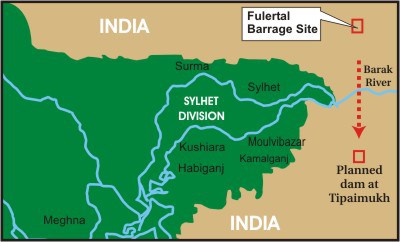 The diversion of the waters is part of a China’s larger hydro-engineering project, the South-North water diversion scheme. The 2,906-km long Brahmaputra is one of Asia’s largest rivers that traverse its first stretch of 1,625 km in China’s Tibet region, the next 918 km in India and the remaining 363 km in Bangladesh before converging into the Bay of Bengal. The Tsangpo is now perhaps the only Transboundary Rivers yet to be dammed in China after dams are constructed over Mekong, Salween, Irrawady, Sutlej, Indus etc.
The diversion of the waters is part of a China’s larger hydro-engineering project, the South-North water diversion scheme. The 2,906-km long Brahmaputra is one of Asia’s largest rivers that traverse its first stretch of 1,625 km in China’s Tibet region, the next 918 km in India and the remaining 363 km in Bangladesh before converging into the Bay of Bengal. The Tsangpo is now perhaps the only Transboundary Rivers yet to be dammed in China after dams are constructed over Mekong, Salween, Irrawady, Sutlej, Indus etc.
The water diversion project at the Great Bend will spell disaster for the Tibetan plateau and the lower riparian countries, India’s North East and Bangladesh.[12] India is also facing a security dilemma over the Chinese control over the principal watershed of South and Southeast Asia in Tibet. India fears Chinese reported plans to use nuclear technology in the project will lead to environmental concerns in the Eastern Himalayas.[13] Indian experts say the mega scheme could be disastrous for the 185 million people of India’s North East and Bangladesh. In Assam, 80 per cent of the population is involved in agriculture, depending on Brahmaputra for irrigation and the region’s regular earthquakes, that can hit 8.0 on the Richter scale, can destroy the proposed Chinese dam and cause devastating floods downstream.
India’s proposed Tipaimukh dam and China’s proposed dam over Yarlung Tsangpo bears much similarity in terms of scale of destruction, threats and challenges both in upstream and downstream portion of the rivers. In the latter scheme, both India and Bangladesh shares common challenges when China proceeded with diversion of Brahmaputra waters in its territory primarily due to shortage of water. Bangladesh exists because of its waters coming from the Mighty Rivers Ganges, Teesta, Brahmaputra, and Barak etc. India’s Farakka Dam over River Ganges burdens Bangladesh with an irreparable crisis of unfathomable magnitude.
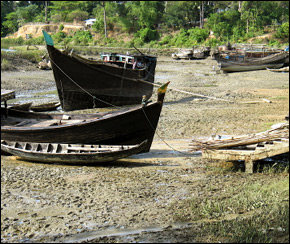 India pursued a perfidious double game. While objecting China’s plan to dam Yarlung Tsangpo, India aggressively pursued mega dams construction spree in India’s North East, including gigantic dams over the same river Yarlung Tsangpo, called Siang (the Brahmaputra) in Arunachal Pradesh, notwithstanding concerns in India’s North East and Bangladesh. The Siang Upper HE Project is a massive 11000 MW project to be built over Siang River in East Siang district of Arunachal Pradesh. The Middle and Lower Siang Hydel project with 750 mw and 1700 mw power generating capacity are other mega dams planned over the same river. The 2000 MW Lower Subansiri Hydroelectric project is another mega dam over River Subansiri, a main tributary of Brahmaputra River. Other dams over the tributaries of Brahmaputra includes the Ranganadi I and II (450 and 150 mw respectively), Kameng (600 mw), 3000 MW Dibang HE project etc.[14] the construction of series of dams over Siang River and its tributaries will exacerbate the water crisis and related problems in Assam and Bangladesh.
India pursued a perfidious double game. While objecting China’s plan to dam Yarlung Tsangpo, India aggressively pursued mega dams construction spree in India’s North East, including gigantic dams over the same river Yarlung Tsangpo, called Siang (the Brahmaputra) in Arunachal Pradesh, notwithstanding concerns in India’s North East and Bangladesh. The Siang Upper HE Project is a massive 11000 MW project to be built over Siang River in East Siang district of Arunachal Pradesh. The Middle and Lower Siang Hydel project with 750 mw and 1700 mw power generating capacity are other mega dams planned over the same river. The 2000 MW Lower Subansiri Hydroelectric project is another mega dam over River Subansiri, a main tributary of Brahmaputra River. Other dams over the tributaries of Brahmaputra includes the Ranganadi I and II (450 and 150 mw respectively), Kameng (600 mw), 3000 MW Dibang HE project etc.[14] the construction of series of dams over Siang River and its tributaries will exacerbate the water crisis and related problems in Assam and Bangladesh.
India’s plan to construct more than 169 dams in India’s North East and connotation of the region as India’s Power house has been met with stiff opposition from the region. The Assam Govt strongly opposed proposed construction of mega dams on the Siang River and several other rivers in Arunachal Pradesh.[15] “I am aware of Assam’s concerns over the dams and I feel there is no need to construct mega dams”, Governor of Assam, Shiv Charan Mathur said while addressing his first press conference.[16] The Assam Govt set up a commission to study the environmental impact of mega dams in Arunachal Pradesh and other neighboring states on Brahmaputra valley region.[17] “Large-scale diversion of water would adversely hit the state’s economy and could even lead to environmental problems and affecting the surface water table” according to Chief Minister of Assam, Tarun Gogoi. Anti dam movement is increasing In Arunachal Pradesh where most of the dams are being planned.[18] India use all means, mis-information, flouting of norms, manipulations, militarization, brute use of force and nepotism etc to push through dam projects.
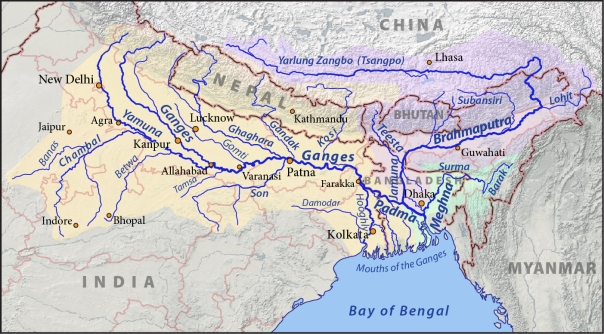 India is proactive in addressing concerns with the Chinese Govt on the proposed dam over Tsangpo River, relaying its concern to Beijing in 2006[19] However, the Govt of Bangladesh needs be more proactive to the whole scheme to dam the Brahmaputra River and its tributaries in China and India, which will worsen water crisis in Bangladesh and Assam. Bangladesh faces a big challenge to confront the “exploitation potential” of both China and India over the use of transboundary waters. There is indeed, a primary urgency for Bangladesh and the people of India’s North East to explore all means to ensure China and India to adopt a multilateral, multiparty decision over transboundary water use with due and full respect of rights and participation of indigenous peoples depending on waters. All States indeed, should refrain from unilateral and contradictory decisions over transboundary waters disregarding downstream concerns and rights of indigenous peoples.
India is proactive in addressing concerns with the Chinese Govt on the proposed dam over Tsangpo River, relaying its concern to Beijing in 2006[19] However, the Govt of Bangladesh needs be more proactive to the whole scheme to dam the Brahmaputra River and its tributaries in China and India, which will worsen water crisis in Bangladesh and Assam. Bangladesh faces a big challenge to confront the “exploitation potential” of both China and India over the use of transboundary waters. There is indeed, a primary urgency for Bangladesh and the people of India’s North East to explore all means to ensure China and India to adopt a multilateral, multiparty decision over transboundary water use with due and full respect of rights and participation of indigenous peoples depending on waters. All States indeed, should refrain from unilateral and contradictory decisions over transboundary waters disregarding downstream concerns and rights of indigenous peoples.
Towards multilateral and human rights based approach to manage transboundary waters:
Diplomatic engagement between India and Bangladesh over proposed Tipaimukh Dam, latest being the Prime Ministers meet at NAM summit in Egypt and past experience of efforts to resolve water dispute between the two countries, such as the Indo-Bangla Ganges Water sharing treaty, 1996 and setting up of Teesta River Commission, 1997 etc, indicates possibility of the two countries converging towards establishing dialogues for resolution of differences. Intervention of the United States envoy to Bangladesh favoring a dialogue to settle the row further reinforces this possibility. Indeed, Bangladesh Prime Minister called for political unity with the opposition BNP to be able to “bargain better with India” over Tipaimukh Dam issue.[20] However, the Statement of Mr. Razzak, proposed head of Bangladesh parliamentary team to visit Tipaimukh dam site, that the Tipaimukh dam is beneficial for Bangladesh, is premature given that Bangladesh Govt is still yet to take an official position on the dam and despite absence of comprehensive and multilateral impact assessment. The statement seriously negates and undermined the rationale and objectives of the visit to Tipaimukh dam site.[21]
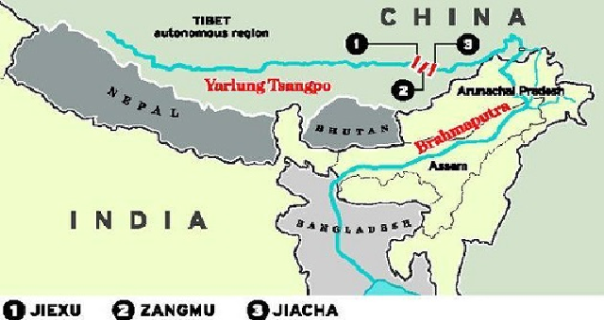 In transboundary waters such as Mekong River, Yarlung Tsangpo, Barak River etc, question looms large as to whether a single country or States solely decide over the use of the waters in exclusion of indigenous people who lives and depends on the waters over millennia and whose cultures, identity and traditions evolved with such relationships? The big question still remains, will the people of Manipur accept any compromise bargaining, if any and exclusively crafted between India and Bangladesh. Any bilateral Agreement between India and Bangladesh without the people of Manipur will be unacceptable. The people of Manipur have inalienable rights over the transboundary waters. International law has also evolved that Indigenous peoples have right to self determination over their land resources, need for recognizing their rights over their land and resources and having clear rights to define their develop priorities on how to use, manage their land and resources in accordance with the UN Declaration on the rights of Indigenous peoples, 2007 and recommendations of the sessions of UN Permanent Forum on Indigenous Issues at UN HQs, May 2009. Such approach can prevent all sufferings of indigenous peoples affected by Bangladesh’s Kaptai Dam in Chittagong Hills Tract, India’s Loktak Hydroelectric Project in Manipur or India’s Dumbur dam in Tripura etc.
In transboundary waters such as Mekong River, Yarlung Tsangpo, Barak River etc, question looms large as to whether a single country or States solely decide over the use of the waters in exclusion of indigenous people who lives and depends on the waters over millennia and whose cultures, identity and traditions evolved with such relationships? The big question still remains, will the people of Manipur accept any compromise bargaining, if any and exclusively crafted between India and Bangladesh. Any bilateral Agreement between India and Bangladesh without the people of Manipur will be unacceptable. The people of Manipur have inalienable rights over the transboundary waters. International law has also evolved that Indigenous peoples have right to self determination over their land resources, need for recognizing their rights over their land and resources and having clear rights to define their develop priorities on how to use, manage their land and resources in accordance with the UN Declaration on the rights of Indigenous peoples, 2007 and recommendations of the sessions of UN Permanent Forum on Indigenous Issues at UN HQs, May 2009. Such approach can prevent all sufferings of indigenous peoples affected by Bangladesh’s Kaptai Dam in Chittagong Hills Tract, India’s Loktak Hydroelectric Project in Manipur or India’s Dumbur dam in Tripura etc.
The resolution of Tipaimukh dam seriously needs a multilateral, inclusive and human rights based approach to development and sensitivity to the concerns & established rights of all affected peoples. Bangladesh Govt’s announcement of sending an all-party parliamentary committee to visit Tipaimukh dam site in end July 2009 to review the dam’s impact will be a right step if the visit forms the basis for an inclusive process to conduct detailed impact assessment of the dam in upstream and downstream of the Barak River based on recommendations of World Commission on Dams, 2000 and other applicable Int’l law on transboundary waters, such as the UN Convention on the Law of Non Navigational Uses of International Watercourses of 1997. The visit can be a good grounding for a multilateral approach in addressing Tipaimukh Dam issues.
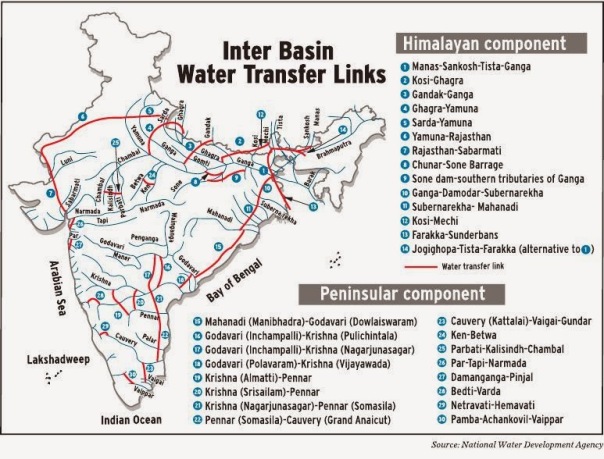 Bangladesh and the indigenous peoples of India’s North East needs be fully sensitive to the multitude of mega dam projects planned both by India and China in transboundary waters and tributaries and should strategize for a multi dimensional and multi party approach in the use and management of transboundary waters with due respect of rights of people in lower riparian areas and indigenous peoples dependent on such waters.
Bangladesh and the indigenous peoples of India’s North East needs be fully sensitive to the multitude of mega dam projects planned both by India and China in transboundary waters and tributaries and should strategize for a multi dimensional and multi party approach in the use and management of transboundary waters with due respect of rights of people in lower riparian areas and indigenous peoples dependent on such waters.
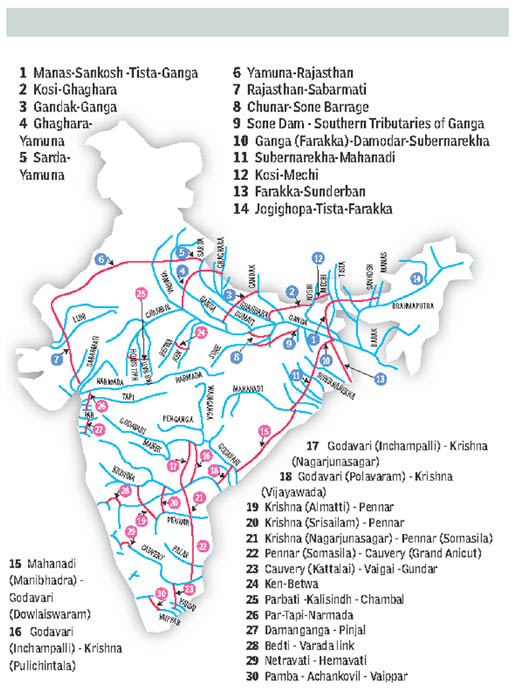 India should refrain from constructing Tipaimukh dam to avoid multidimensional conflicts and complications as the project is potentially rife for causing conflicts between states, between state and indigenous peoples and between indigenous peoples all over control and management of resources and definition of developmental priorities. As Manipur is already rife with movements for right to self determination, any forced construction of Tipaimukh dam with its multifaceted impacts will only legitimize their movement to defend their land and resources. The NEEPCO and the Govt of Manipur must revoke the Memorandum of Understanding on Tipaimukh dam project inked in 2003 and initiate a comprehensive process for a just decision making process.
India should refrain from constructing Tipaimukh dam to avoid multidimensional conflicts and complications as the project is potentially rife for causing conflicts between states, between state and indigenous peoples and between indigenous peoples all over control and management of resources and definition of developmental priorities. As Manipur is already rife with movements for right to self determination, any forced construction of Tipaimukh dam with its multifaceted impacts will only legitimize their movement to defend their land and resources. The NEEPCO and the Govt of Manipur must revoke the Memorandum of Understanding on Tipaimukh dam project inked in 2003 and initiate a comprehensive process for a just decision making process.
*************************************************
NOVEMBER 01, 2014
Public hearings on Tipaimukh project a farce
Sunita Akoijam,
Down To Earth, 04 July 2015
https://www.downtoearth.org.in/news/public-hearings-on-tipaimukh-project-a-farce-8872
Act 1; Scene 1 Churachandpur, Manipur “Don’t divide our people; don’t take away our land; save our biodiversity; dam destroys our land; we are strongly opposed to the Tipaimukh dam”.
Act 1; Scene 2 Tamenglong, Manipur “Don’t make us refugees; no land, no identity; our land is our life; Where will we go if the dam submerges our own land?”
Two neighbouring towns in Manipur had awaited public hearings on the proposed Tipaimukh Multipurpose Hydel Project (see ‘Fissured land’, Down To Earth , October 15, 2006) for months. The government finally announced them for November 2006, after it had floated a global tender for works on it and the Union government had already promised a Rs 400 crore security cover for a ‘proposed’ project. To anyone who had not inferred the farcical character of the public hearings, the prime minister decided to inaugurate the dam even before the environmental clearances were through.Finally, he relented, only to promise the inauguration before Christmas, clearly informing how irrelevant the public hearings were for the government which had already made up its mind. But the people voiced their anguish in no unclear terms at Tamenglong (the Naga dominated district, where displacement would be the highest) and in Churachandpur (the Hmar dominated district, where the government promised the dam would bring attendant development). The state nevertheless announced the events were successfull.
At Churachandpur The public hearing was held behind closed doors with heavy security in the office of the deputy commissioner on November 17. Sumant Singh, the deputy commissioner, chaired the hearing along with representatives from organisations such as the Manipur Pollution Control Board, North Eastern Electric Power Cooperation (neepco)–the government agency entrusted with the responsibility of building power projects in the northeast–Tipaimukh Hydro Electric Project and others, and also about 8-10 village chiefs.
But representatives of over 30 villages and environmental activists, besides the media, were denied entry inside the deputy commissioner’s office where the public hearing was held. The government had already declared in its advertisement that only those able to prove their proposed displacement would be allowed in.The officials played delay-tactics compelling the people to leave the venue because they had come from far away places. The situation remained tense outside the venue. “We are not criminals. We are innocent citizens who want to meet the deputy commissioner. Why is our right to information and participation being so blatantly violated?” asked Sumitra Kamei, a villager.
At a press conference held after the hearing, the administration gave its own version. “Churachandpur today gave its assent to the proposal for the construction of Tipaimukh Dam,” said Singh. The panel members claimed that the Chief’s Association of Tipaimukh Dam Affected Area had laid down certain conditions, which included land and agricultural compensation and 50 per cent job reservation for the affected people. But neepco representatives clarified that these demands were already in the memorandum of understanding (mou) that it signed with the state government.
After blocking off the protestors, the panel made a brazen declaration “among the organisations that were present in the hearing, no one has voiced their opposition to the construction of the dam, rather many had words of appreciation for the project”. The misgivings that people may have with regard to the dam.
|
Finally, he relented, only to promise the inauguration before Christmas, clearly informing how irrelevant the public hearings were for the
A contrasting voice
Panti Golmei, president Rongmei Women’s Organisation, Assam, Manipur and Nagaland, said that people were not aware of the hearing and got to know of it through newspapers. “We were kept waiting for over three hours at the gate of the Churachandpur deputy commissioner’s office while the deputy commissioner and his staff wasted our time with their dilly-dally tactics. We condemn Sumant Singh,” she said.
Tamenglong
Two days ahead of the public hearing, the state government had sent two companies of the Indian Reserved Battalion (irb). People at the district’s headquarter said, “We were surprised to see irb and we knew that there was trouble ahead.” As irb escorted officials to the hearing, it gave Tamenglong a ready-for-war look. Security forces patrolled a kilometre away from the office chamber of the deputy commissioner–the venue of the hearing. Representatives of 26 different organisations, including Zeliangrong Union (Assam, Manipur, Nagaland), actip, Zeliangrong Students’ Union, and others were allowed entry to the meeting after a long struggle with the security. But they walked out midway boycotting the hearing.
“We will die for out land but we will never agree to give it at any cost,” said Kadicham Pamei, chairman of Zeliangrong Union, Tamenglong zone after he walked out of the hearing after half an hour. “We have been demanding our government to develop the Zeihlat Lake and Barak waterfalls as tourist spots but they never listened and now they are all set to submerge them,” he charged.
Conflicting versions
In the din, the officials heard only what they wanted to. The prime minister’s Christmas event–inauguration of the Tipaimukh project, after all, is already scheduled.
CRA expresses concerns with dams in Manipur on International Rivers Day, 14 March 2020
The E-Pao.Net, 15 March 2020
The Kangoi Khullen and Kangoi Khunnou Village Authorities, the Centre for Research and Advocacy, Manipur (CRA) and the Citizens Concern for Dams and Development celebrated the international Rivers Day at Kangoi Irangpham, Tengnoupal District, Manipur on 14th March with the theme “Let the Rivers Flow Free in Manipur”.
The celebration of International Rivers day aims to foster the importance of Rivers in sustaining the lives of communities and health of the ecosystem in Manipur.
Mr. Sanaton Laishram, President of CRA, Manipur presenting the keynote shared that the celebration of international rivers day is to protect the health of Rivers and to prevent all forms of unsustainable development that destroyed the health of rivers. He also said the River Day is also held to rethink the pattern of introduction of unsustainable development such as targeting Rivers for uncontrolled pollution, construction of hydropower projects and to ensure the free flow of rivers in Manipur.

Christina CRA sharing on protection of Rivers at International Rivers Day at Kangoi on 14 March 20
Ms. Aram Pamei, Co-Chairperson, Citizens Concern for Dams and Development stressed the importance of rivers, land, forest etc that sustained the lives and the cultures of indigenous communities over generations.
She stressed the importance of promoting our traditional practices and cultures that supported the sustainable management of land and resources. She expressed concern with the destructive development practices, such as construction of large dams that severed the relationship of communities with rivers, forest and their land. She said land is life and encouraged the communities to rejuvenate their age-old traditional practices for sustainable management of land and resources.
Mr. Themson Jajo, environmental activist shared his experiences of adverse impacts of Mapithel dam. He said the Mapithel dam submerged their agriculture land, forest and river and causing widespread displacement in Mapithel areas in Kamjong District, Manipur. Mr. Themson stressed that Dams are unsustainable and hence should not be encouraged in Kangoi area and other parts of Manipur.
Ms. Christina Pakuangte shared how Khuga dam lay defunct in Churachandpur areas in Manipur.

Let the Rivers flow free – NO to dams in Manipur – at International Rivers Day at Kangoi on 14 March 20
R. Muikham of the All Tribal Women Organization shared that Rivers are living entities much like a human body with heart and soul. The flow of Rivers is like the flow of blood and heartbeat in human body. As rivers sustained life and the health of climate, Rivers should be protected. Communities should take care of Rivers and the catchment areas by planting more trees and stopping deforestation.
Mr. Jiten Yumnam, Secretary of CRA, Manipur expressed concern with the Government’s plan to build the Kangoi multipurpose project over the Sengvai River in Tengnoupal District, Manipur.
He also explained that dams in Manipur like the Khuga dam, Khoupum dam etc are lying defunct without serving any purpose despite wasting huge public money and destroying peoples land and livelihood He urged the Government to rescind its plan to build more than thirty dams over the Rivers of Manipur.
The participants of Rivers Day celebration resolved to urge the Government to ensure the free flow of all Rivers of Manipur and to stop plans for construction of hydropower projects like Kangoi Dam over Sengvai River, 190 MW Pabram Dam over Barak River, 66 MW Loktak Downstream Project over the Leimatak River etc over the Rivers of Manipur.
The International Rivers day celebration also resolved to strengthen efforts for free flow of Rivers and protest forest, land and other resources in Manipur.

Let the Rivers flow free in Manipur – at International Rivers Day at Kangoi on 14 March 20
Concern over ADB financed Imphal Town Ring Road
The E-Pao.Net, 26th February 2020

Langol Hills and settlement affected by ADB ring road Imphal
The Centre for Research and Advocacy, Manipur (CRA), would like to express our concern that the Government of Manipur is preparing to resume the construction of the Imphal Town Ring Road to be financed by the Asian Development Bank (ADB). The efforts of ADB to finance the project even meeting with Chief Minister of Manipur earlier in January 2020 has been a matter of concern.
CRA would like to recall that the ADB financed Imphal Town Ring Road, initially pursued several years back in 2015 has been delayed substantially after several communities affected by the project road, such as in Langthabal, Patsoi, Langol, Kongba area in Imphal West District, Manipur etc objected to the road project due to myriad social and environmental impacts, failure to consult and take consent of affected communities, improper surveys of impacts and also due to lack of holistic plan for rehabilitation and resettlement for affected communities.
The Imphal Ring Road Project will lead to widespread displacement, loss of livelihood and impoverishment of communities.
The renewed efforts to resume the project in January 2020 by the Government and ADB has been marred with lack of clarity if ever the project authorities had considered and addressed the issues and concerns raised, including alternatives offered by affected communities to recognize their rights.
CRA would like to urge the Government of Manipur and ADB to provide all information related to the Imphal Ring Road project, viz. Detailed Project Report, Impact Assessment, Rehabilitation and Resettlement Plan for affected communities. There should be no forceful displacement of affected communities, no forceful acquisition of community land for the project. The Government should consider the indebtness and other impacts of loan financings for infrastructure projects in Manipur.
The right to free, prior and informed consent of affected indigenous communities should be taken before resuming the project. The ADB should strictly apply and implement its safeguard policy to mitigate any adverse social and environment impacts and to ensure respect of the rights of all affected communities and to ensure accountability of corporations and ADB involved in the project.
The Centre for Research and Advocacy, Manipur maintains that development processes rooted in communities’ rights and role, environmental integrity and accountability of all development stakeholders, including financiers like ADB can only lead to sustainable development in Manipur.

Settlement at Kongba affected by ADB ring road Imphal
CRA decries tagging conservation area to Pumlen Pat
The Sangai Express, 16 February 2020
IMPHAL, Feb 15
Fearing drastic impacts on the livelihood of villagers depen-ding on Pumlen Pat, the Centre for Research and Advocacy (CRA), Manipur has raised serious concern on announcement of the wetland as conservation area by the Manipur State Wetland Authority.
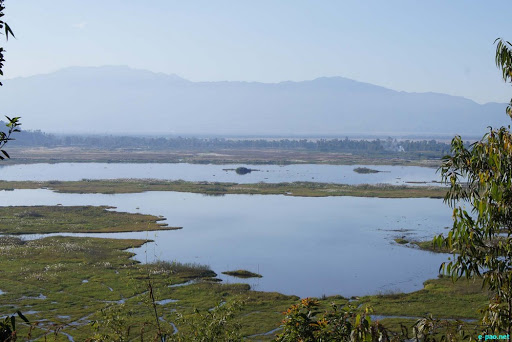
Pic: Pumlen Pat
Denouncing the declaration of Pumlen Pat, the second largest freshwater lake in the State after Loktak, as conservation area and second home for Sangai by the Government without consulting the stakeholders concerned, CRA in a statement today contended that the move would be infringing upon the rights of the locals.
It also criticised the Forest Department’s move to declare the wetland as reserved forest area. While conservation of Sangai is important, the proposed declaration of Pumlen Pat as reserved forest area will result in violation of human rights, CRA asserted.
The area demarcated for conservation and setting up of second home of Sangai in Pumlen Pat is vast and it will impact the livelihood of the villages – Waikhong, Lamjao, Sekmaijin, Waba-gai, Arong, Nongmaikhong, Tera, Langmeidong and several others in the periphery of the wetland, CRA said adding most of the villagers earn their livelihood from the wetland by farming, fishing and collecting seasonal vegetation.
The Meitei people have intrinsic physical and cultural relationship with the Pumlen Pat and abodes of many deities of cultural significance such as Nongpok Ningthou and Haoreima Goddess are in the wetland. Varieties of traditional herbs and medicines that have usage in traditional rituals and ceremonies are collected from the hillocks and wetlands within Pumlen Pat, said CRA.
Urging the Government, specially the Loktak Development Authority and the Forest Department to desist from declaring the Pumlen Pat as forest area or wetland conservation area or second home of Sangai, CRA advised that the community’s rights and role in sustainable wetland management should be recognised in conserving the wetland.
Government should take prior and informed consent of all stakeholders in all projects and activities concerning Pumlen Pat, CRA added. Reminding the impact of Ithai Barrage and Loktak Hydroelectric projects on the people, CRA also appealed Government to decommission these projects.

